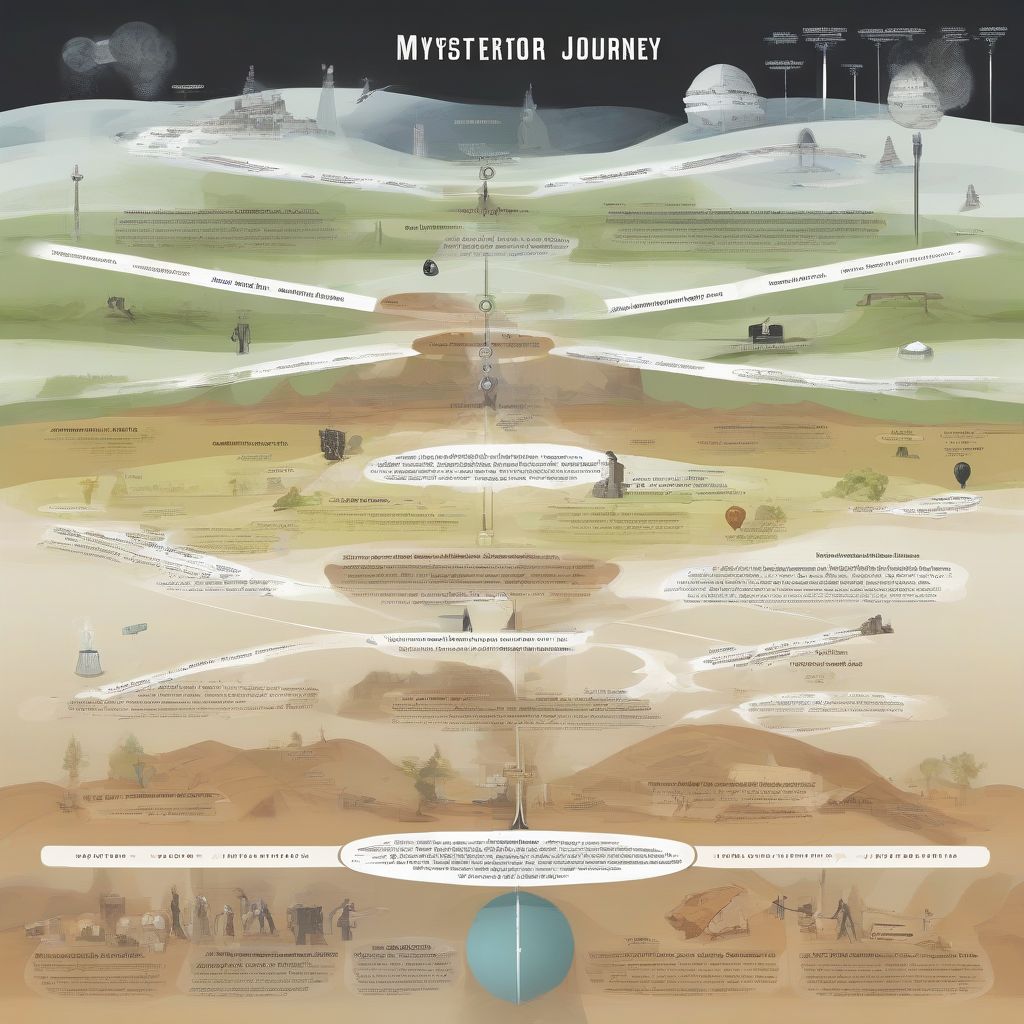Have you ever found yourself engrossed in a science fiction novel, completely transported to another world, only to put it down and wonder, “How did they do that?” The secret sauce, my friends, often lies in the meticulous crafting of the narrative structure. Understanding this structure can be like unlocking a hidden dimension within your favorite sci-fi stories, revealing deeper layers of meaning and enjoyment.
Deconstructing the Building Blocks: Plot, Setting, and Character in Sci-Fi
While all good stories rely on a solid foundation of plot, setting, and character, science fiction utilizes these elements in unique ways:
1. Plot: Beyond the Expected Twists and Turns
Yes, science fiction is known for its mind-bending concepts and unexpected plot twists. However, effective narrative structure ensures these twists serve a purpose beyond mere shock value. They should propel the story forward, reveal character motivations, or pose thought-provoking questions about humanity and our place in the universe.
2. Setting: A Character in Itself
In science fiction, the setting often transcends a simple backdrop and becomes a dynamic force shaping the narrative. Consider the desolate, post-apocalyptic world of Cormac McCarthy’s “The Road” or the intricately crafted societies within Frank Herbert’s “Dune.” These settings are not merely locations; they are living, breathing entities that influence plot and character development.
3. Character: Human (or Not) at Their Core
Even when dealing with aliens, robots, and AI, the most compelling science fiction stories explore relatable human experiences. The best authors use the genre’s speculative nature to examine themes of identity, morality, and the human condition, making even the most extraordinary characters relatable.
Unveiling the Architectures: Common Narrative Structures in Science Fiction
Just as there are countless imaginative worlds in sci-fi, there are diverse narrative structures. Here are a few common ones:
1. The Hero’s Journey: A classic structure found in everything from “Star Wars” to “Ender’s Game,” the hero’s journey follows a protagonist’s transformative quest, often involving trials, mentors, and ultimately, a return home, forever changed.
2. The Mystery: Think “Blade Runner” or “Annihilation.” Mysteries in science fiction use speculative elements to heighten suspense. The unveiling of the unknown often goes hand-in-hand with explorations of existential questions.
3. The Episodic Structure: This approach, often found in space operas like “Firefly” or “Babylon 5,” connects individual stories through an overarching narrative thread. Each episode offers a self-contained plot while contributing to the larger tapestry of the universe.
4. Non-Linear Storytelling: Science fiction often plays with time and perception. Novels like “Slaughterhouse-Five” by Kurt Vonnegut or “The Time Traveler’s Wife” by Audrey Niffenegger utilize fragmented timelines and shifting perspectives to challenge traditional notions of causality and explore the complexities of memory and experience.
 Narrative Structure in Science Fiction
Narrative Structure in Science Fiction
Enhancing Appreciation: Tips for Deeper Reading
1. Pay Attention to World-Building: How does the author establish the rules and logic of their universe? What details bring the setting to life, and how do these details impact the characters and their choices?
2. Consider the “What If?”: Science fiction thrives on speculation. What if artificial intelligence became sentient? What if we could travel faster than light? Engage with the author’s thought experiments and consider the ethical, societal, and philosophical implications they raise.
3. Look Beyond the Surface: Don’t be afraid to delve into the subtext. Science fiction often uses allegory, metaphor, and symbolism to explore complex issues. For example, what social commentary might lie beneath a story about a dystopian society or the ethics of genetic engineering?
4. Discuss and Engage: Join a book club, participate in online forums, or simply chat with fellow sci-fi enthusiasts. Sharing perspectives and interpretations can enrich your understanding and appreciation of the genre’s narrative depth.
Conclusion: Embracing the Journey of Discovery
Appreciating the narrative structure of science fiction novels is an ongoing journey of exploration. By understanding the elements at play, recognizing common structures, and actively engaging with the text, you can unlock a deeper level of enjoyment and gain a greater appreciation for the artistry behind your favorite sci-fi stories. Remember, each novel is a portal to new worlds and ideas waiting to be discovered.
So, fellow travelers, keep exploring, keep questioning, and keep venturing into the boundless realms of science fiction!
[amazon bestseller=”science fiction novels”]
